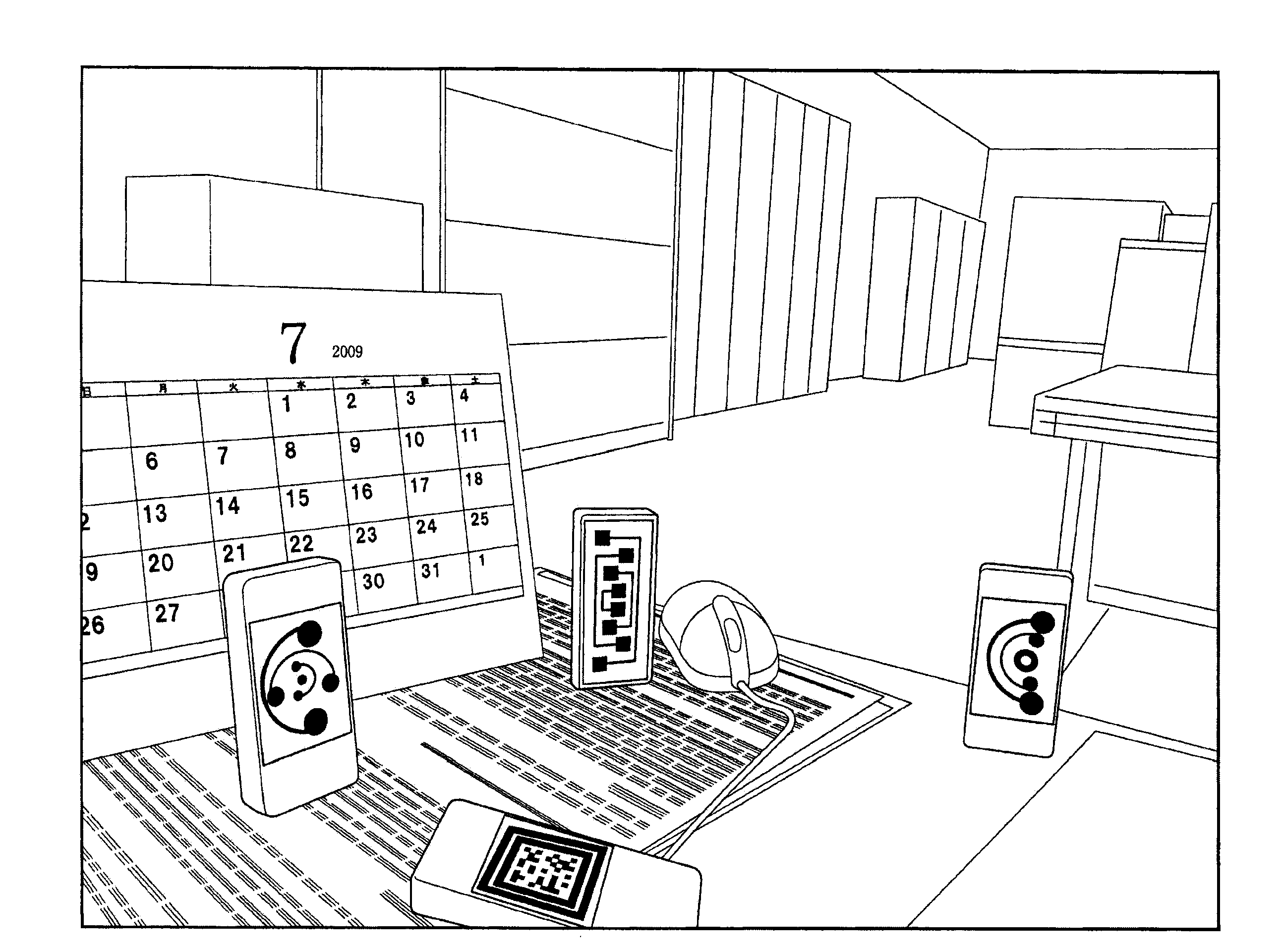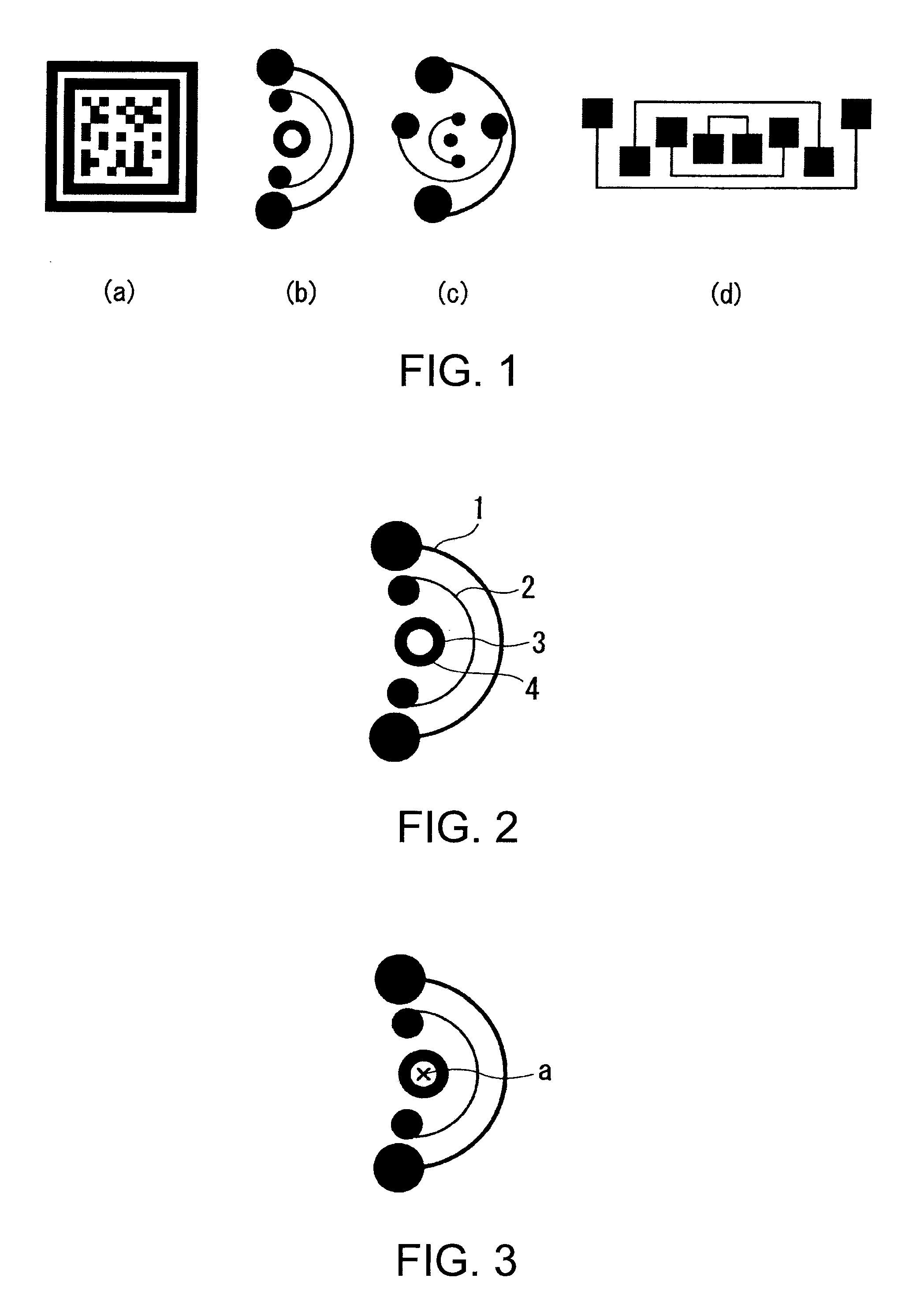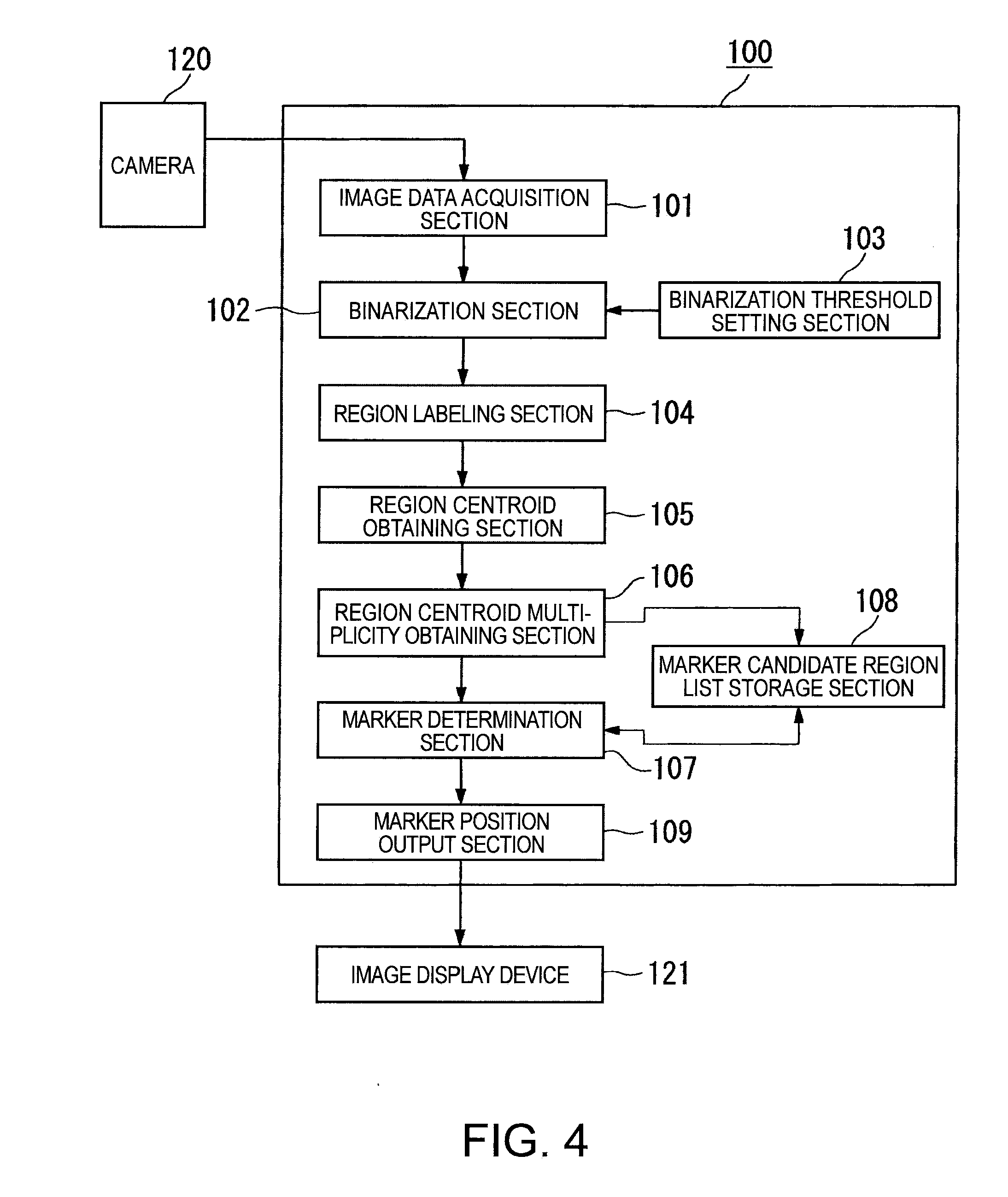Marker processing method, marker processing device, marker, object having a marker, and marker processing program
- Summary
- Abstract
- Description
- Claims
- Application Information
AI Technical Summary
Benefits of technology
Problems solved by technology
Method used
Image
Examples
first embodiment
[0057]FIGS. 1A through 1D are diagrams showing some examples of a marker according to a first embodiment. In FIGS. 1A through 1D, each of the markers shown in FIGS. 1A through 1D is formed so that the centroid positions of the respective labels in each of the markers are identical to each other. Further, the markers shown in FIGS. 1A through 1D are each provided with four centroids.
[0058]FIG. 2 is a diagram for explaining constituents of the marker shown in FIG. 1B according to the first embodiment. The marker shown in FIG. 1B is constituted by a constituent 1, a constituent 2, a constituent 3 (black circle), and a constituent 4 (white circle) as constituents separated in accordance with white and black colors. These constituents are labeled in a labeling process described later for each region corresponding to the constituent.
[0059]FIG. 3 is a diagram for explaining centroids of the constituents of the marker shown in FIG. 1B according to the first embodiment. The marker shown in F...
second embodiment
[0120]Then, a second embodiment will be explained with reference to FIGS. 19 through 21, 22A through 22L, and 23A through 23L. In the first embodiment, the marker determination is performed with respect to the regions labeled by the region labeling section 104 using the multiplicity as a degree of overlap of the centroids of the respective regions.
[0121]In the second embodiment, identification of a type of the marker is further performed with respect to the regions labeled by the region labeling section 104.
[0122]FIG. 19 is a block diagram showing an example of a configuration of the marker processing device according to the second embodiment. The marker processing device 100 is composed of an image data acquisition section 101, a binarization section 102, a binarization threshold setting section 103, a region labeling section 104, a region centroid calculation section 105, a region centroid multiplicity calculation section 106, a marker determination section 107, a marker candidate...
third embodiment
[0139]Then, a third embodiment will be explained with reference to FIGS. 24 through 27. The third embodiment relates to a method of forming the marker embedded with additional information. As explained with reference to FIGS. 17A through 17F of the first embodiment, since the only requirement of the marker, the marker processing method, and the marker processing device of the invention is that a predetermined number of centroids of the regions (labels) of the element overlap with each other, if a redundant element is embedded in a space other than the region, substantially the same advantage can be obtained.
[0140]An example of a method of embedding the redundant information into the marker will be explained with reference to FIGS. 24 through 27. FIG. 24 shows a flowchart of a process of embedding additional information into the marker. FIG. 25 is a diagram for explaining a method of forming a protective area-added marker. FIG. 26 is a diagram for explaining a method of adding data t...
PUM
 Login to View More
Login to View More Abstract
Description
Claims
Application Information
 Login to View More
Login to View More - R&D
- Intellectual Property
- Life Sciences
- Materials
- Tech Scout
- Unparalleled Data Quality
- Higher Quality Content
- 60% Fewer Hallucinations
Browse by: Latest US Patents, China's latest patents, Technical Efficacy Thesaurus, Application Domain, Technology Topic, Popular Technical Reports.
© 2025 PatSnap. All rights reserved.Legal|Privacy policy|Modern Slavery Act Transparency Statement|Sitemap|About US| Contact US: help@patsnap.com



